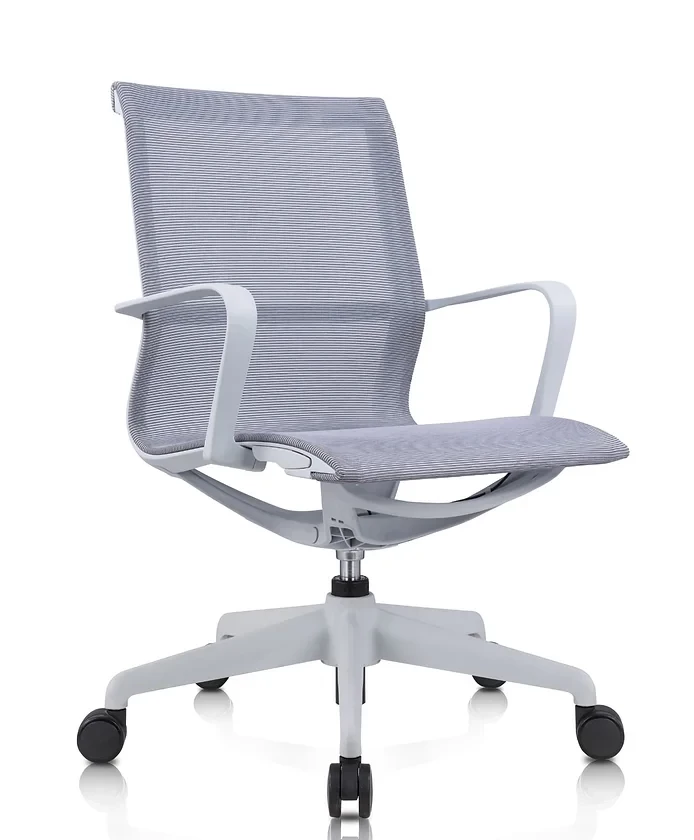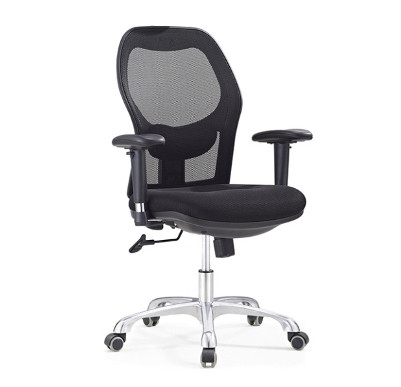
Top Office Chairs for Hot-Desking and Shared Workstations
Introduction
Hot-desking and shared workstations have become common in today’s flexible work culture. These dynamic setups require chairs that are not just comfortable but also versatile enough to meet the needs of various users throughout the day. Unlike traditional seating, chairs for shared use must accommodate different body types, promote healthy posture, and be easy to adjust on the fly. In this article, we explore key features to look for in chairs suited for hot-desking environments and recommend options that strike the right balance between design and function.
1. Easy Adjustability for All Users
The ideal hot-desking chair allows anyone to make quick adjustments without complicated mechanisms. Look for chairs with intuitive controls for seat height, back tilt, and armrests so users can personalize their setup in seconds, ensuring comfort without the learning curve.
2. Breathable Mesh Backs for Long Hours
Mesh back chairs are a top choice for shared environments. They offer excellent ventilation, keeping users cool even during extended periods of sitting. This is especially useful in hot-desking setups where temperature preferences and comfort needs vary throughout the day.
3. Lumbar Support for Shared Comfort
Consistent lumbar support is essential in any ergonomic chair, but especially in shared workspaces. Chairs with built-in or adjustable lumbar systems help promote good posture and prevent discomfort for users with different back support needs.
4. Durability Across Frequent Use
In a shared setting, office chairs are subject to constant use by different individuals. Choosing chairs made from high-quality materials with a robust frame and durable wheels ensures they remain reliable and comfortable even with frequent adjustments and movement.
5. Minimalist Design for Any Workspace
Hot-desking areas are often designed to be clean and uncluttered. Chairs with a sleek, neutral look blend effortlessly into different environments, supporting a streamlined aesthetic while being functionally sound.
6. Swivel and Mobility Features
Effortless mobility is important for hot-desking. Chairs that swivel and roll smoothly allow users to move between stations or tasks quickly without strain. Smooth-rolling casters are particularly valuable on hard flooring or shared desk setups.
7. Compact Footprint for Tight Layouts
Shared workstations tend to maximize space, so a chair with a compact design that doesn’t compromise on comfort is ideal. Chairs without large armrests or bulky frames work well in tight or modular layouts, helping to keep the workspace flexible.
8. Support for Multiple Sitting Styles
Since different people have unique seating habits, chairs for hot-desking should be adaptable to upright postures, relaxed tilts, or forward-leaning positions. Features like tilt tension and reclining locks enhance comfort for all preferences.
9. Low-Maintenance Materials
For hygiene and upkeep in a shared setting, look for chairs made with easy-to-clean materials. Mesh, quality fabrics, and smooth plastic surfaces make daily cleaning easier while maintaining a professional appearance.
10. Quick Assembly and Setup
Shared spaces often require furniture that’s quick to set up or replace. Chairs that come with tool-free assembly or require minimal setup time help facilities teams maintain and rearrange the workspace with ease.
Additional Considerations for Shared Workstation Seating
Promote Equal Access to Comfort
In shared environments, every user deserves equal ergonomic support. Choosing chairs with standard features like adjustable seat depth or height ensures inclusivity across different body types.
Encourage Movement and Breaks
A chair that supports occasional movement—such as rocking or leaning—encourages users to stay active, even when seated for long hours.
Go for Neutral Colors
To keep a consistent visual theme across shared desks, stick to black, grey, or muted tones that complement most interior styles and reduce visual noise.
Ensure Silent Operation
Squeaky wheels or creaky armrests can be distracting in open office setups. Choose chairs designed with silent components for a quieter, more focused environment.
Keep Back Support Central
Ensure that the lower back area of each chair is adequately supported. Even a slight lumbar curve can significantly reduce discomfort during long sessions.
Check for Stackable or Nesting Options
In agile workspaces, it helps if chairs can be stacked or tucked away when not in use. Some lightweight models are designed to save space without compromising comfort.
Align with Your Workspace Layout
Hot-desking setups vary—from benching systems to solo pods—so pick chairs that match the height and spacing of your existing desks to prevent awkward posture.
Avoid Overly Customized Designs
Custom-fit chairs might work for personal offices but aren’t ideal for shared spaces. Stick with versatile models that suit a broad range of preferences.
Provide a Standard User Guide
To reduce confusion, consider a quick reference card or sticker near each desk showing how to adjust the chair. It helps new users feel confident and comfortable immediately.
Test Before Purchasing in Bulk
If outfitting an entire hot-desking area, try a few chair models in real use before finalizing. This helps ensure the chosen chair performs well across different tasks and users.
Recommended Products:

-
Finmon Mesh Office Chair – Grey
With its breathable mesh back, minimalist frame, and quick-adjust features, this chair is ideal for shared setups where form and function must work seamlessly.
-
Mujaan Mesh Low Back Ergonomic Chair
This low-back design offers lightweight mobility and ergonomic essentials, perfect for hot-desking environments that prioritize flexibility and user comfort.
Final Thoughts
Choosing the right office chair for hot-desking setups means focusing on adaptability, ergonomic support, and durability. A well-designed chair ensures that every user, no matter how briefly they occupy the desk, feels supported and productive. By selecting chairs that combine breathable materials, intuitive adjustability, and streamlined aesthetics, you can create a shared workspace that feels just as comfortable and personal as a dedicated one.
FAQ
Q: What’s the difference between hot-desking chairs and traditional chairs?
A: Hot-desking chairs are designed for versatility, easy adjustment, and frequent use by multiple people, whereas traditional chairs are typically tailored for one user’s preferences.Q: Can hot-desking chairs be ergonomic?
A: Yes, many hot-desking chairs are built with ergonomic features like lumbar support, breathable mesh, and adjustable height to ensure user comfort throughout the day.


